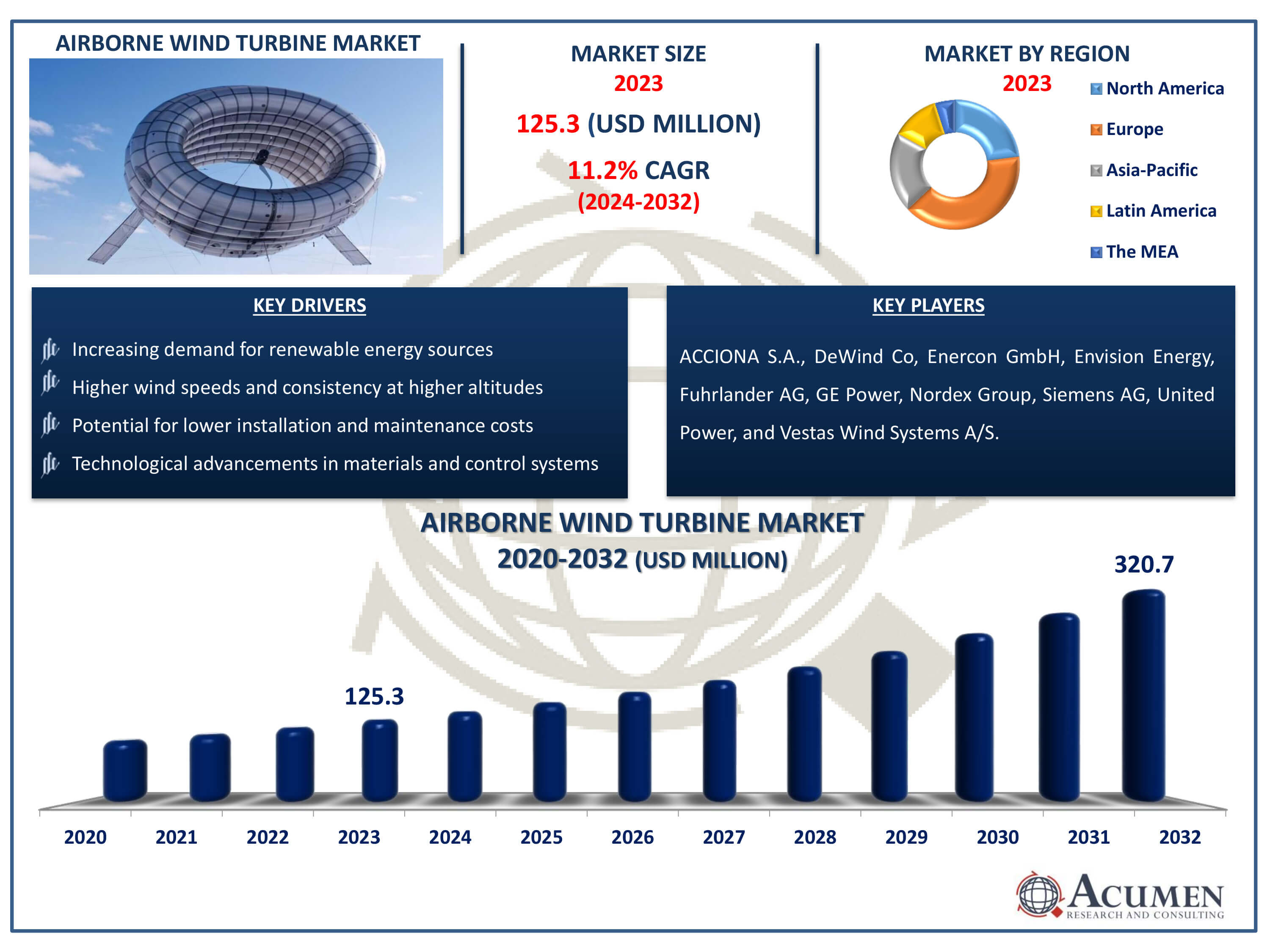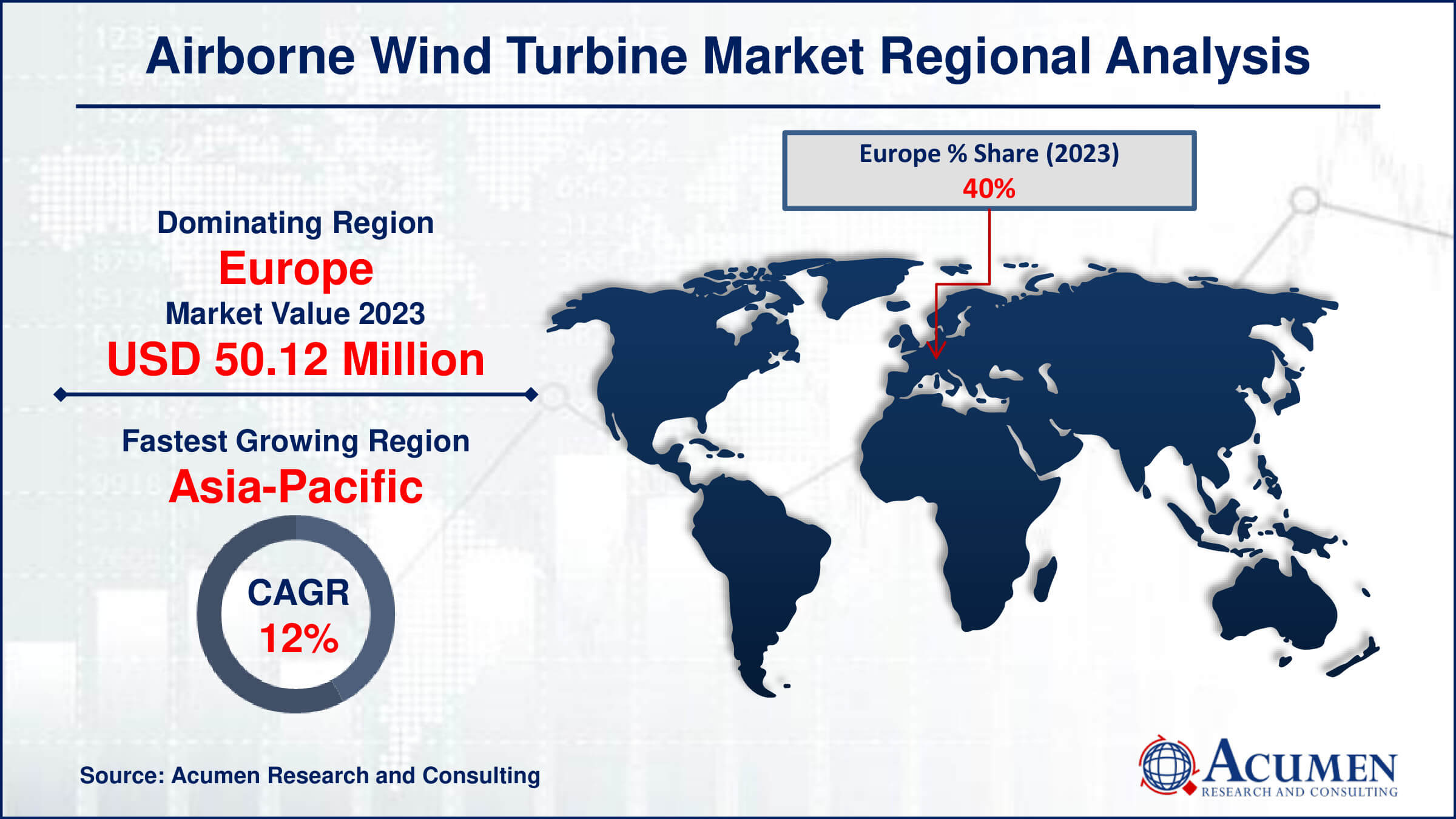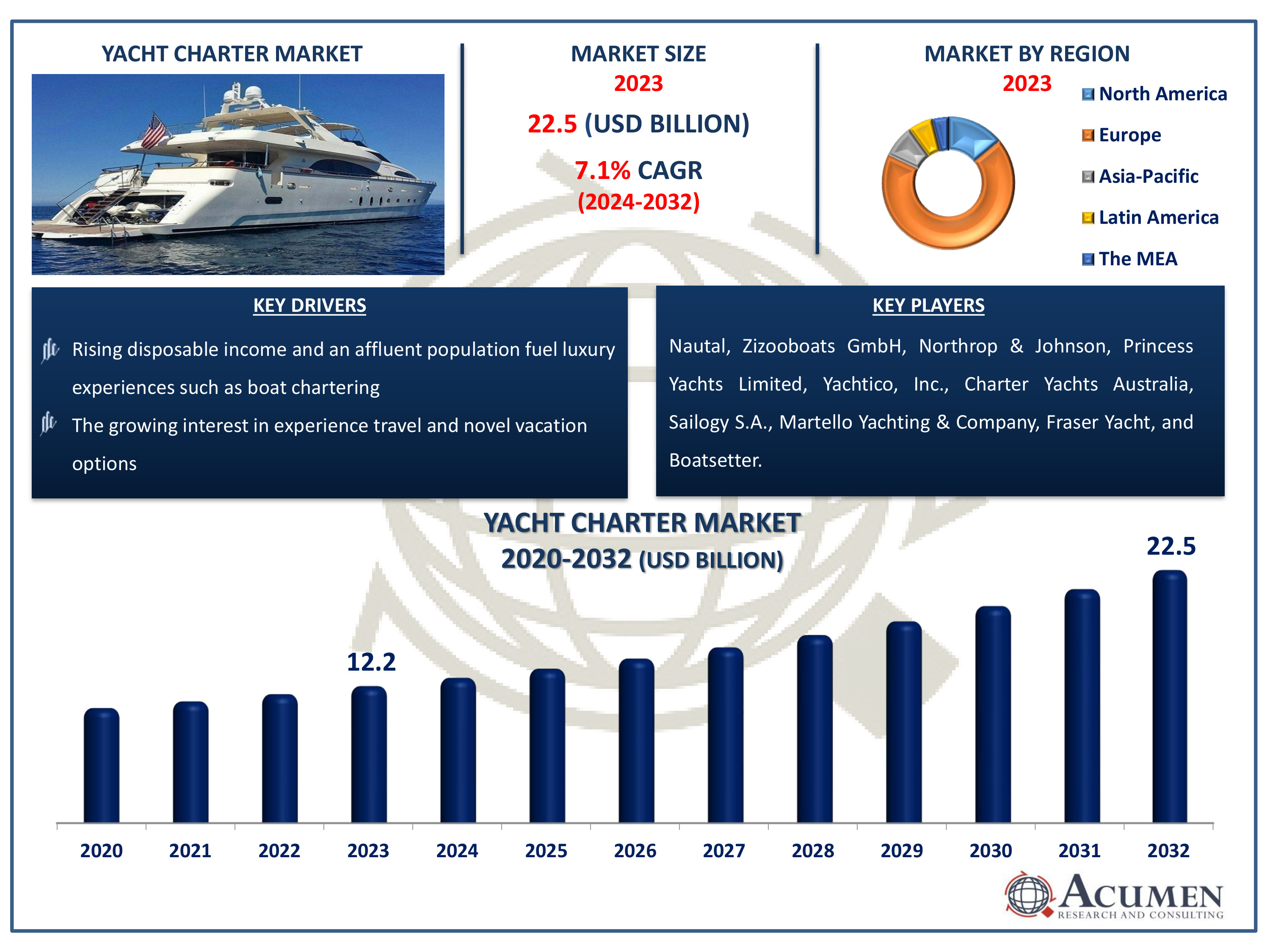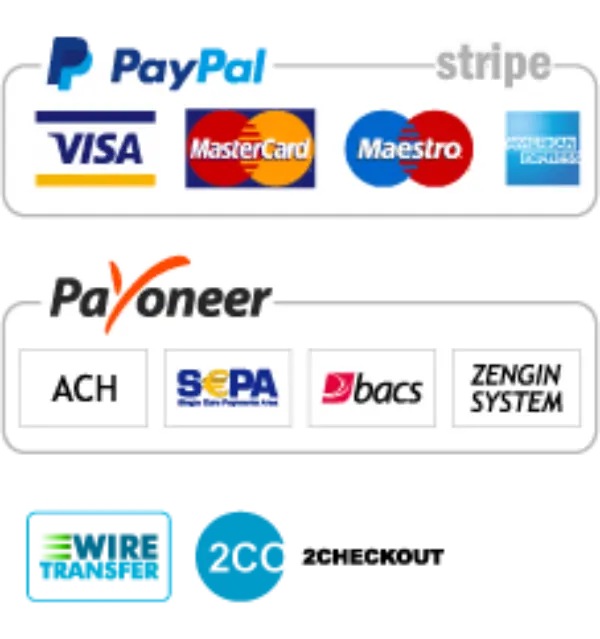Airborne Wind Turbine Market Size - Global Industry, Share, Analysis, Trends and Forecast 2024 - 2032
Published :
Report ID:
Pages :
Format :
Airborne Wind Turbine Market Size - Global Industry, Share, Analysis, Trends and Forecast 2024 - 2032
Report Coverage
- Industry Dynamics
- Market Size and Forecast Data
- Segment Analysis
- Competitive Landscape
- Regional Analysis with a Niche Focus on Country-Level Data
- High Level Analysis - Porter's, PESTEL, Value Chain, etc.
- Company Profiles of Key Players
- Option to Customize the Report As Per Your Specific Need
Request Sample Report
The Airborne Wind Turbine Market Size accounted for USD 125.3 Million in 2023 and is estimated to achieve a market size of USD 320.7 Million by 2032 growing at a CAGR of 11.2% from 2024 to 2032.
Airborne Wind Turbine Market Highlights
- The global airborne wind turbine market is projected to reach USD 320.7 million by 2032, growing at a CAGR of 11.2% from 2024 to 2032
- Europe airborne wind turbine market was valued at USD 50.12 million in 2023
- Asia-Pacific airborne wind turbine market is expected to grow at a CAGR of 12% from 2024 to 2032
- Based on type, the onshore occupied generated utmost revenue in 2023
- The wind power generation application held significant share in the airborne wind turbine market in 2023
- Increasing integration of advanced materials and autonomous control systems is a key trend in the airborne wind turbine market, boosting industry growth

An airborne wind turbine (AWT) is a type of wind energy technology that operates at high altitudes, where wind speeds are stronger and more consistent than those experienced by traditional ground-based wind turbines. These systems are often made up of tethered aeroplanes or kites equipped with turbines or wind-catching surfaces that produce power. The tether transmits the generated electricity to the ground and can also be used to stabilise and regulate the aerial device's flight. By gaining access to higher-altitude winds, AWTs have the potential to produce more electricity than standard wind turbines, making them an appealing alternative for increasing wind energy efficiency and capacity.
AWTs encompass a variety of designs, such as kites, drones, and tethered balloon-like structures. Some systems use onboard generators, but others use the mechanical energy of the kite's motion to power ground-based generators. AWTs have various advantages, including lower installation and maintenance costs due to the lack of tall towers and the flexibility to be placed in a broader range of locations, including offshore and remote locales. Despite these advantages, AWTs confront obstacles like as stability, control, airspace rules, and public acceptance, which must be overcome for widespread use and commercial viability.
Global Airborne Wind Turbine Market Dynamics
Market Drivers
- Increasing demand for renewable energy sources
- Higher wind speeds and consistency at higher altitudes
- Potential for lower installation and maintenance costs
- Technological advancements in materials and control systems
Market Restraints
- Regulatory and airspace challenges
- High initial development costs
- Public acceptance and safety concerns
Market Opportunities
- Expansion into offshore and remote locations
- Development of hybrid energy systems integrating AWTs
- Growing interest in decentralized and off-grid power solutions
Airborne Wind Turbine Market Report Coverage
| Market | Airborne Wind Turbine Market |
| Airborne Wind Turbine Market Size 2022 | USD 125.3 Million |
| Airborne Wind Turbine Market Forecast 2032 | USD 320.7 Million |
| Airborne Wind Turbine Market CAGR During 2023 - 2032 | 11.2% |
| Airborne Wind Turbine Market Analysis Period | 2020 - 2032 |
| Airborne Wind Turbine Market Base Year |
2022 |
| Airborne Wind Turbine Market Forecast Data | 2023 - 2032 |
| Segments Covered | By Type, By Application, And By Geography |
| Regional Scope | North America, Europe, Asia Pacific, Latin America, and Middle East & Africa |
| Key Companies Profiled | ACCIONA S.A., DeWind Co, Enercon GmbH, Envision Energy, Fuhrlander AG, GE Power, Nordex Group, Siemens AG, United Power, and Vestas Wind Systems A/S. |
| Report Coverage |
Market Trends, Drivers, Restraints, Competitive Analysis, Player Profiling, Covid-19 Analysis, Regulation Analysis |
Airborne Wind Turbine Market Insights
Several significant drivers are driving the airborne wind turbine (AWT) market, highlighting its renewable energy potential. To begin, there is an increase in worldwide demand for renewable energy sources as people become more concerned about climate change and the need to cut greenhouse gas emissions. AWTs provide a promising answer by harnessing the more steady and powerful winds found at higher altitudes, which can result in higher energy production than standard ground-based wind turbines. Furthermore, advances in materials science and control systems have enabled the creation of more efficient and dependable AWTs, increasing its appeal as a viable energy technology.
However, the market has substantial constraints that may impede its expansion. Regulatory and airspace problems are significant impediments, as the deployment of AWTs must adhere to stringent aviation and environmental laws. High initial development costs are another impediment, as the technology is still in its early phases and requires significant investment in research and development. Furthermore, public acceptance and safety concerns about the functioning of aerial devices must be addressed in order to acquire widespread market adoption. These problems demand constant collaboration among industry stakeholders, legislators, and the general public to create frameworks that promote the safe and effective deployment of AWTs.
Despite these constraints, the AWT business offers several prospects for expansion and innovation. One big possibility is the growth into offshore and isolated areas, where standard wind turbines may be less viable. AWTs may be placed in a wider range of locations, allowing them to take advantage of previously undiscovered wind resources. There is also potential for the development of hybrid energy systems that combine AWTs with other renewable energy sources, such as solar power, to generate more durable and efficient energy solutions. Furthermore, the growing interest in decentralised and off-grid power solutions, particularly in developing countries, creates an ideal environment for the adoption of AWTs, which provide a sustainable and reliable energy alternative to traditional power sources.
Airborne Wind Turbine Market Segmentation
The worldwide market for airborne wind turbine is split based on type, application, and geography.
Airborne Wind Turbine Market By Type
- Onshore
- Offshore
According to the airborne wind turbine industry analysis, the onshore segment now leads the AWT market. This dominance stems mostly from the cheaper initial setup and operational expenses associated with onshore deployments versus offshore sites. Onshore AWTs have simpler access for maintenance and monitoring, simplifying logistics and lowering costs. Additionally, onshore locations provide more established infrastructure and regulatory frameworks, allowing for faster project launch and scaling. However, offshore AWTs have enormous development potential because to their ability to harness greater and more consistent wind speeds at sea, making them an appealing alternative for future expansion as technology progresses and cost barriers fall. Despite this, onshore AWTs remain the dominant category given to existing economic and logistical benefits.
Airborne Wind Turbine Market By Application
- Wind Power Generation
- Transportation
- Pumping Water
- Others
As per the airborne wind turbine market, the wind power generation segment is projected to account for the utmost market share from 2024 to 2032. This dominance is driven by the increasing global emphasis on renewable energy sources to combat climate change and reduce reliance on fossil fuels. AWTs offer a promising solution for wind power generation due to their ability to access stronger and more consistent winds at higher altitudes, resulting in higher energy yields compared to traditional ground-based turbines. As technological advancements continue to enhance the efficiency and reliability of AWTs, their adoption for large-scale wind power generation is expected to grow, solidifying this segment's leading position in the market.
Airborne Wind Turbine Market Regional Outlook
North America
- U.S.
- Canada
Europe
- U.K.
- Germany
- France
- Spain
- Rest of Europe
Asia-Pacific
- India
- Japan
- China
- Australia
- South Korea
- Rest of Asia-Pacific
Latin America
- Brazil
- Mexico
- Rest of Latin America
The Middle East & Africa
- South Africa
- GCC Countries
- Rest of the Middle East & Africa (ME&A)

Airborne Wind Turbine Market Regional Analysis
Europe is now the dominant market for airborne wind turbines (AWTs), owing to tight environmental legislation, ambitious renewable energy targets, and major expenditures in wind energy technologies. Countries including as Germany, the Netherlands, and the United Kingdom are early adopters of AWTs, using their strong research capabilities and substantial renewable energy infrastructure. The European Union's ambition to reaching net-zero emissions by 2050 has expedited the development and deployment of new wind energy technologies, such as AWTs. Extensive offshore wind farms and supportive policy frameworks strengthen Europe's dominant position in the global AWT market by creating a favourable environment for large-scale implementation and technology developments.
In contrast, the Asia-Pacific (APAC) region is emerging as the fastest-growing market for AWTs, driven by rapidly rising energy demand and a growing emphasis on sustainable energy sources. Countries such as China, India, and Japan are investing extensively in renewable energy technology to fulfil rising energy demand and reduce dependency on fossil fuels. The wide geographical extent and varying climatic conditions in the APAC area present substantial opportunities for both onshore and offshore AWT deployments. Additionally, government initiatives and favourable laws targeted at boosting sustainable energy contribute to the rapid expansion of the AWT market in this region. As APAC expands its renewable energy portfolio, it is likely to play a key role in the global adoption and development of AWT technology.
Airborne Wind Turbine Market Players
Some of the top airborne wind turbine companies offered in our report includes ACCIONA S.A., DeWind Co, Enercon GmbH, Envision Energy, Fuhrlander AG, GE Power, Nordex Group, Siemens AG, United Power, and Vestas Wind Systems A/S.
Frequently Asked Questions
How big is the airborne wind turbine market?
The airborne wind turbine market size was valued at USD 125.3 Million in 2023.
What is the CAGR of the global airborne wind turbine market from 2024 to 2032?
The CAGR of airborne wind turbine industry is 11.2% during the analysis period of 2024 to 2032.
Which are the key players in the airborne wind turbine market?
The key players operating in the global market are including ACCIONA S.A., DeWind Co, Enercon GmbH, Envision Energy, Fuhrlander AG, GE Power, Nordex Group, Siemens AG, United Power, and Vestas Wind Systems A/S.
Which region dominated the global airborne wind turbine market share?
North America held the dominating position in airborne wind turbine industry during the analysis period of 2024 to 2032.
Which region registered fastest CAGR from 2024 to 2032?
Asia-Pacific region exhibited fastest growing CAGR for market of airborne wind turbine during the analysis period of 2024 to 2032.
What are the current trends and dynamics in the global airborne wind turbine industry?
The current trends and dynamics in the airborne wind turbine market include increasing demand for renewable energy sources, higher wind speeds and consistency at higher altitudes, potential for lower installation and maintenance costs, and technological advancements in materials and control systems.
Which type held the maximum share in 2023?
The onshore type held the maximum share of the airborne wind turbine industry.



